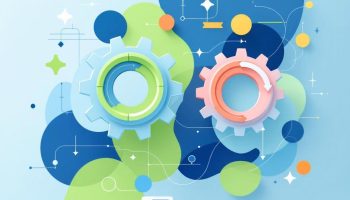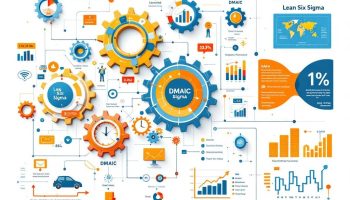
Understanding Skills Gap Analytics
Skills gap analytics offers a data-driven approach to identify and address workforce capability disparities, helping organizations align talent development with strategic business objectives. By measuring the difference between required and existing skills, companies can create targeted interventions that transform workforce development from a reactive expense into a strategic investment.
Key Takeaways:
- Skills gap analytics helps organizations precisely identify the difference between current employee capabilities and business requirements.
- Less than 40% of employees understand their company’s strategic goals, making skill gap analysis critical for alignment.
- Effective skill gap analytics combines both hard and soft skills assessment to provide a comprehensive view of workforce capabilities.
- Organizations using skill gap analytics can develop targeted training programs that directly support business outcomes.
- Implementing skill gap analytics can lead to improved employee engagement, productivity, and competitive positioning.
The Challenge of Skills Alignment
Modern businesses face significant challenges in maintaining a workforce with the right skills to meet organizational goals. Skills gap analysis provides the solution by identifying exactly where your team’s capabilities fall short of current and future needs.
The disconnect between employee skills and company objectives can’t be overstated. Research shows that a majority of workers don’t fully grasp their company’s strategic goals, creating a fundamental misalignment that hinders progress and growth.
Comprehensive Skills Assessment
Comprehensive skills assessment must include both technical capabilities and interpersonal qualities. Technical skills are measurable and specific to job functions, while soft skills like communication and adaptability often determine how effectively an employee applies their technical knowledge.
Data-Driven Training Initiatives
Data from skills gap analytics enables you to create highly focused training initiatives. Instead of generic professional development, you can invest in programs that directly address specific skill deficiencies relevant to your business goals.
The Broader Benefits of Skills Gap Strategies
The benefits extend beyond improved capabilities. Companies that implement effective skills gap strategies report higher employee retention rates, increased productivity, and better market positioning compared to competitors.
Practical Applications
Practical applications include succession planning, where skills gap data helps identify high-potential employees who need specific development to move into leadership roles. This approach creates clear career pathways while ensuring organizational continuity.
The Role of Technology
Technology plays a crucial role in modern skills assessment. Advanced skills mapping tools can quickly identify patterns across departments and highlight emerging skill needs before they become critical shortages.
Continuous Improvement
Forward-thinking organizations don’t wait for skill gaps to become problems. They implement continuous assessment processes that adapt to changing market conditions and technological advancements, keeping their workforce perpetually aligned with business requirements.
“Skills gap analytics empowers organizations to transform workforce development from a reactive expense into a strategic investment, aligning talent capabilities with business objectives. By pinpointing the discrepancies between current skills and future needs, companies can cultivate targeted training that enhances engagement, productivity, and competitive advantage.”
Definition and Strategic Importance
Skills gap analytics identifies the difference between the skills your organization requires and what your employees currently possess. This powerful approach helps you align workforce capabilities with business objectives by using data to pinpoint where training and development efforts should focus. Skill gap analytics goes beyond a simple checklist approach to uncover hidden risks and growth opportunities that might otherwise remain invisible.
Organizations that implement skill gap analytics gain a competitive edge. Less than 40% of employees understand their company’s strategic goals, making it difficult to develop the right capabilities. By applying skill gap analytics, you’ll bridge this disconnect and ensure your workforce development initiatives directly support business outcomes.
Key Components of Effective Skill Gap Analytics
Your skill gap analytics strategy should incorporate these essential elements:
- Strategic Assessment: Identify which skills drive your business success and master the strategic planning process to align talent with organizational goals
- Data Collection: Gather information through performance reviews, assessments, and manager feedback
- Gap Identification: Measure the difference between required and existing skills using quantitative metrics
- Action Planning: Develop targeted interventions to close identified gaps
- Continuous Monitoring: Implement ongoing tracking to measure progress
The insights from skill gap analytics enable you to make data-driven decisions about hiring, training, and resource allocation. This approach transforms workforce development from a reactive expense into a strategic investment that delivers measurable returns.
When implementing skill gap analytics, you’ll need to establish clear metrics. Consider creating a skills inventory database that catalogs both technical and soft skills across your organization. This foundation allows you to leverage big data predictive analytics to forecast future skill needs based on industry trends and organizational direction.
Your skill gap analytics process should balance immediate needs with long-term strategic goals. By identifying both current and anticipated skill gaps, you’ll develop a workforce that can adapt to changing business conditions while maintaining operational excellence. This proactive approach to talent management will position your organization to thrive amid technological change and competitive pressures.
Organizations with a clear understanding of their skills gaps are 2.5 times more likely to be considered high-performing.
hbr.org
Comprehensive Skills Gap Analysis Process
Effective skill gap analytics requires a structured approach to identify and address workforce capability disparities. This five-step process helps you systematically evaluate your organization’s skills landscape and develop targeted interventions to close critical gaps.
The comprehensive process begins with planning, where you define organizational goals and identify the skills needed to achieve them. Many organizations struggle at this stage—according to workforce studies, less than 40% of employees clearly understand their organization’s strategic goals, making skill gap analytics essential for alignment.
Here’s a breakdown of the five core steps in the skill gap analytics process:
- Planning – Define organizational objectives and determine which skills are mission-critical
- Identification – Map required skills for each role against strategic priorities
- Measurement – Assess actual employee capabilities through various assessment methods
- Analysis – Compare required versus existing skills to identify gaps
- Action – Develop targeted learning interventions to address identified gaps
When conducting skill gap analytics, you can employ various assessment methods including skills surveys, performance reviews, and formal skills assessments. Using a database analytics approach helps organize and visualize this information effectively.
Effective Measurement Tools
For optimal skill gap analytics, you’ll need the right tools to visualize and track workforce capabilities. Consider these essential measurement instruments:
- Skills Matrix – Maps employee proficiency levels across various competencies
- Competency Frameworks – Defines expected skill levels for different roles
- Skills Inventories – Catalogs all available skills within your organization
- Gap Analysis Dashboards – Provides visual representation of skill disparities
Implementing these tools requires clear metrics and consistent evaluation criteria. Regular process optimization methods help refine your skill gap analytics approach over time.
When integrating skill gap analytics into your broader talent strategy, ensure you’re measuring both technical and soft skills. While technical capabilities might be easier to quantify, soft skills often represent significant gaps that impact organizational performance. Your skill gap analytics should capture both dimensions to provide a complete picture of workforce capabilities.
Expert Insight: To effectively implement a comprehensive skills gap analysis, begin with a clear understanding of your organization’s strategic goals and identify the essential skills required to meet those objectives. Utilize measurement tools such as skills matrices and competency frameworks to assess current employee capabilities and visualize skill disparities, ensuring a balanced focus on both technical and soft skills. Regularly evaluate and refine your approach through process optimization methods to adapt to evolving workforce needs and enhance overall organizational performance.
Identifying Critical Skills Gaps
Hard skills and soft skills both require strategic analysis when identifying talent deficiencies in your organization. Your company’s ability to compete depends on recognizing these gaps through effective skill gap analytics before they impact performance. Without proper assessment, you can’t create focused development plans that address actual needs rather than perceived ones.
Data shows significant disparities between what organizations need and what their workforce currently offers. The most prominent hard skills in demand include data analytics, digital communication capabilities, and project management expertise. These technical competencies directly affect your company’s ability to execute projects and analyze market conditions effectively.
When conducting big data predictive analytics, focus on quantifying these gaps precisely. Use skill gap analytics to measure current proficiency levels against desired benchmarks. This provides clear metrics for improvement rather than subjective assessments.
Equally important are the soft skills requiring development across most organizations:
- Critical thinking abilities that enable better problem-solving
- Decision-making capabilities essential for leadership positions
- Communication and interpersonal skills that enhance collaboration
- Adaptability and change management competencies
Use a skills matrix to visualize these gaps across departments. This tool helps you track skill gap analytics data and prioritize training investments where they’ll deliver maximum impact. By mapping competencies against strategic objectives, you’ll identify which gaps pose the greatest threats to organizational performance.
Measuring and Quantifying Skills Disparities
Multiple assessment methods provide the most accurate picture of your workforce’s capabilities. Surveys offer broad coverage but should be combined with performance reviews and skills assessments for deeper insights. This multi-method approach ensures your skill gap analytics reflects actual capabilities rather than self-reported competencies.
When establishing measurement parameters, consider both current needs and future requirements. Your strategic planning process should incorporate skill gap analytics to anticipate emerging competency requirements. This forward-looking approach prevents reactive scrambling when new skills suddenly become critical.
Technology accelerates this analysis through specialized platforms that track, measure, and visualize skill gaps. These tools aggregate data from multiple sources, creating comprehensive skill inventories that highlight areas of strength and weakness. With robust skill gap analytics, you’ll make evidence-based decisions about training investments, hiring priorities, and organizational restructuring.
The ultimate goal isn’t just identifying gaps but addressing them through targeted interventions. Use your skill gap analytics to develop personalized learning pathways that efficiently close identified gaps. This approach maximizes development resources while ensuring employees gain the specific skills your organization needs most.

Technology and Tools for Skills Gap Analysis
The right technology stack plays a crucial role in conducting effective skill gap analytics for your organization. You’ll need specialized tools to accurately measure, analyze, and address workforce capability gaps with precision and scale.
Modern skills gap analytics platforms offer sophisticated capabilities that transform traditional workforce assessment approaches. These tools combine data collection, visualization, and actionable insights to help you make informed talent development decisions.
The most effective skill gap analytics solutions include:
- Learning Management Systems (LMS) – Track employee training completion and assessment scores to identify competency patterns
- Skills Inventory Software – Map and categorize existing workforce capabilities against required competencies
- Performance Analytics Platforms – Correlate skills data with productivity metrics to prioritize development areas
- AI-Driven Assessment Tools – Use machine learning to identify emerging skill requirements and predict future capability needs
- Integrated HR Information Systems – Connect skills data with broader workforce information for comprehensive analysis
When selecting the right database analytics tools for skills assessment, look for platforms that offer real-time reporting capabilities. These features enable you to continuously monitor skill gap analytics trends rather than relying on outdated annual reviews.
Integration and Implementation Considerations
Effective implementation of skill gap analytics technology requires thoughtful planning. You’ll need to integrate these tools with your existing HR systems while ensuring proper data governance. Successful organizations focus on project integration management to connect their skills analysis platforms with recruitment, performance management, and learning ecosystems.
Data visualization capabilities are particularly important for making skill gap analytics accessible to stakeholders. Look for dashboards that clearly display skills distribution, gap severity, and development progress metrics. These visual representations help transform complex workforce data into actionable intelligence for leadership decision-making.
The true value of skill gap analytics tools comes from their ability to not just identify gaps but to recommend specific interventions. Advanced systems can suggest targeted learning pathways, mentoring opportunities, or recruitment strategies based on identified capability shortfalls. This ensures your skills gap analytics efforts translate directly into practical workforce development actions.
When evaluating skill gap analytics platforms, prioritize those offering customizable assessment frameworks that align with your organization’s unique competency models. This flexibility allows you to measure both technical capabilities and soft skills essential for organizational success.
Organizations that prioritize skill gap analysis are 12 times more likely to see improvements in overall employee performance and engagement.
forbes.com
Benefits and Business Impact
Implementing skill gap analytics delivers substantial value to your organization beyond just identifying training needs. This data-driven approach transforms how you manage talent by connecting workforce capabilities directly to business outcomes. The strategic application of skill gap analytics offers several key advantages that impact your bottom line and competitive positioning.
You’ll gain unprecedented workforce visibility through comprehensive skill gap analytics. By accurately mapping your team’s capabilities against current and future needs, you can make informed decisions about resource allocation, succession planning, and talent acquisition. This visibility enables you to identify potential skill shortages before they become critical, allowing for proactive rather than reactive talent management.
Employee engagement dramatically improves when you implement targeted development plans based on skill gap analytics. Your team members will appreciate personalized growth opportunities that address their specific needs while aligning with organizational goals. A recent workplace study showed that less than 40% of employees understand their organization’s strategic goals, but strategic planning tips that incorporate skill gap insights can bridge this understanding divide.
The productivity gains from properly addressing skill gaps are substantial. When your workforce possesses the exact capabilities needed for their roles, efficiency naturally increases. This targeted approach to skill development eliminates wasted training resources on unnecessary programs while focusing on the specific capabilities that drive performance improvement.
Your competitive advantage strengthens when you leverage skill gap analytics to build a workforce that’s uniquely positioned to execute your business strategy. By understanding the specific capabilities that differentiate your organization, you can intentionally develop these areas for market leadership. Organizations that excel at database analytics and skill assessment consistently outperform competitors in innovation and adaptability.
Revenue growth often follows effective skill gap analytics implementation. When your sales team possesses precisely the right capabilities to address market needs, conversion rates improve. Similarly, operational teams with appropriate skill sets minimize errors and maximize output, directly impacting profitability.
Skill Gap Analytics and Business Outcomes
| Business Area | Skill Gap Analytics Impact |
|---|---|
| Talent Management | Reduced turnover and improved succession planning |
| Innovation | Faster development cycles through targeted capability building |
| Customer Satisfaction | Enhanced service delivery from appropriately skilled staff |
| Market Adaptation | Quicker response to market changes through flexible skill development |
| Operational Efficiency | Reduced errors and waste through properly trained personnel |
Implementing a comprehensive skill gap analytics program requires strategic thinking but delivers multifaceted returns. Your organization will benefit from improved workforce planning, higher employee satisfaction, enhanced productivity, stronger competitive positioning, and ultimately, improved financial performance.
Implementation and Future Strategy
Implementing effective skill gap analytics requires a strategic approach that evolves with your organization’s changing needs. You’ll need to establish ongoing monitoring systems to track workforce capabilities against emerging business requirements. This continuous tracking allows you to identify skill gap analytics opportunities before they become critical issues.
Regular reassessment of organizational skill requirements should become a standard practice within your HR and leadership teams. As markets shift and technologies advance, the skills your teams need will transform accordingly. By implementing continuous improvement in your skills assessment process, you’ll stay ahead of industry changes rather than reacting to them.
Building Adaptive Learning Frameworks
Your learning and development strategies must evolve beyond traditional training programs to address skill gap analytics effectively. Consider these implementation approaches:
- Create cross-functional skills development initiatives that break down departmental silos
- Develop personalized learning paths based on individual skill gap analytics findings
- Establish mentorship programs pairing skilled veterans with employees needing development
- Implement micro-learning opportunities that address specific skill gap analytics results
- Design experiential learning projects that build multiple skills simultaneously
Technology plays a crucial role in modern skill gap analytics implementation. Big data predictive analytics tools help you forecast future skill requirements, while advanced learning management systems track progress toward closing identified gaps. These platforms provide real-time visibility into your workforce capabilities and development progress.
The most successful organizations approach skill gap analytics as an ongoing strategic initiative rather than a one-time project. Your implementation plan should include regular review cycles, clear ownership of the process, and accountability for closing identified gaps. This table illustrates the key implementation components:
| Implementation Component | Purpose | Key Considerations |
|---|---|---|
| Continuous Monitoring | Track evolving skill requirements | Use both formal assessments and informal feedback |
| Adaptive Learning | Personalize development approaches | Blend self-directed and structured learning |
| Technology Integration | Enable data-driven decisions | Choose platforms that integrate with existing systems |
| Leadership Engagement | Drive accountability for closing gaps | Ensure executive sponsorship of initiatives |
| Measurement Framework | Track progress and ROI | Define clear metrics for success |
By embedding skill gap analytics into your organizational culture and strategic planning processes, you’ll create a workforce that continuously adapts to changing business requirements. This proactive approach transforms potential skill gaps from business threats into opportunities for innovation and competitive advantage.






